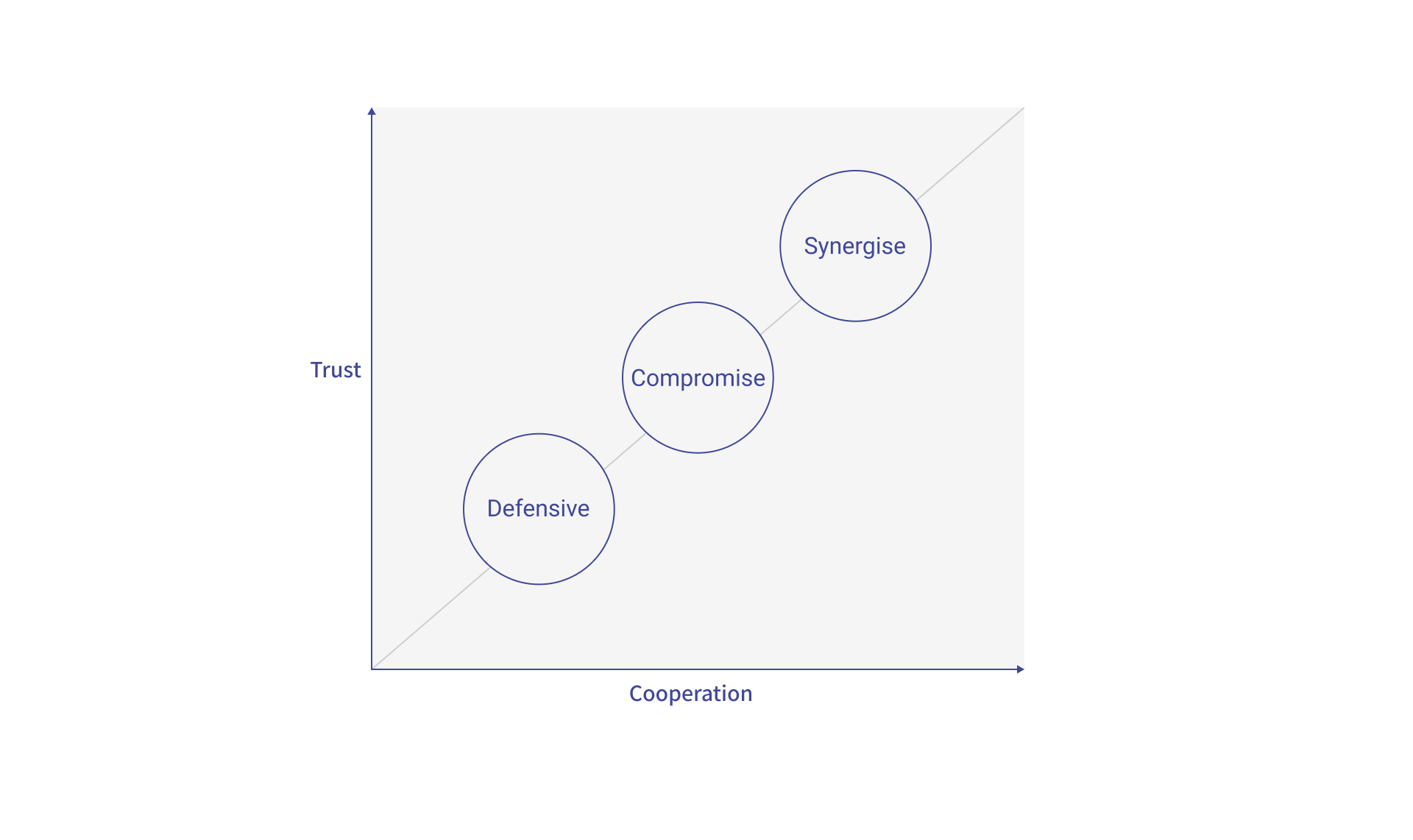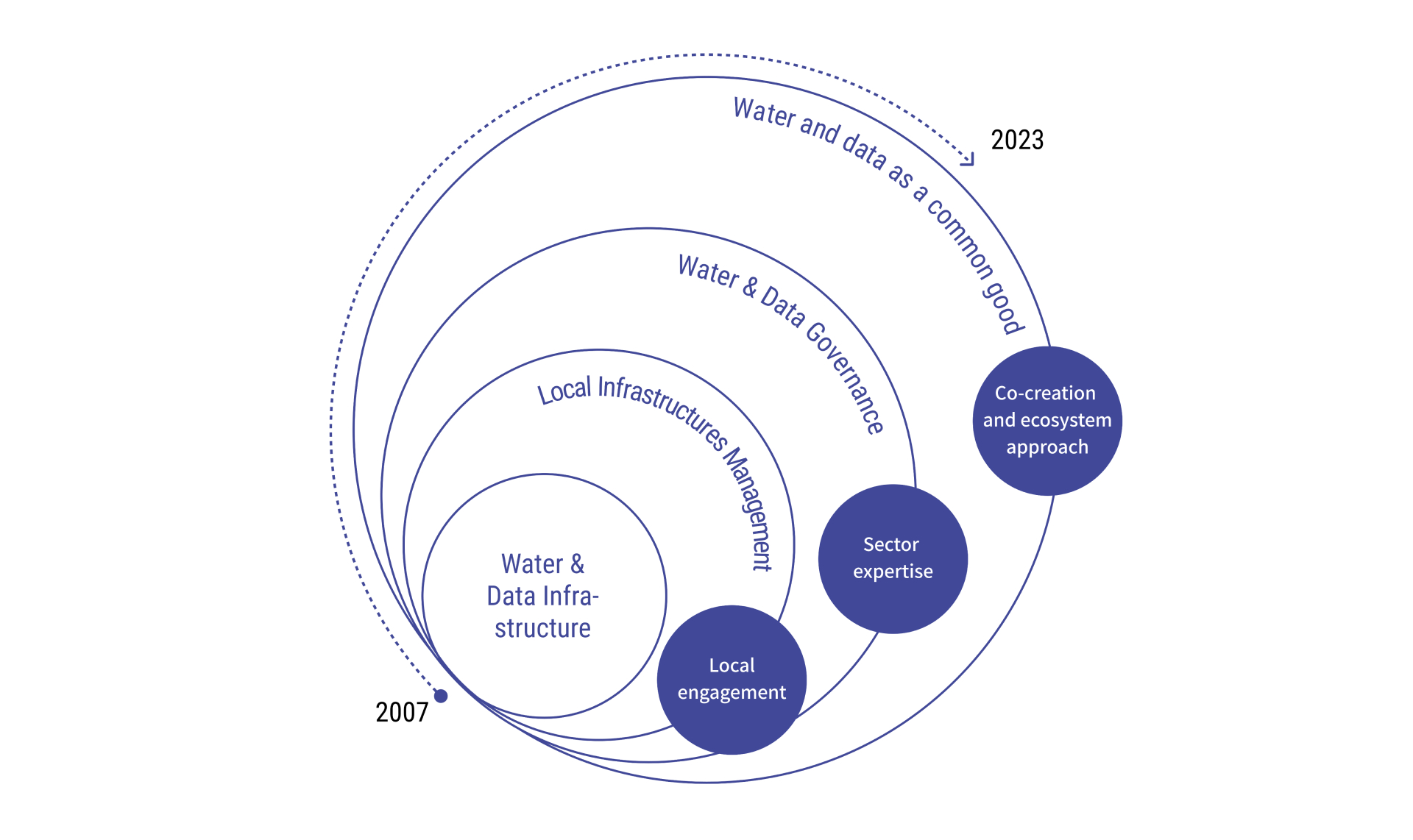As a water sector expert working in the space of data and digitalisation, I’ve experienced first hand how the needs and challenges around water data have changed. At first, there was a lack of tools, resources, and skills to collect data. Now, it seems as though we are inundated with data - we’ve gotten far better at collecting it and developing systems to store it. So why do decision makers at all levels - from local to national - still lack access to reliable and timely data? How can we move beyond simply collecting data for data’s sake, or designing data systems for standalone programmes, to collecting timely data to inform decision makers and accelerate impact?
At Akvo, we envision a future where water data is accurate, open, shared, and reused to achieve maximum impact. We believe that managing water data as a common good will establish a shared sense of ownership and responsibility among stakeholders, and empower citizens to take an active role in decisions about their own water safety, access, and management. By promoting the sharing and exchange of water-related data across disciplinary boundaries and institutions, stakeholders can make more timely informed decisions about water management and ensure that water resources and water services are managed sustainably.
In this blog, inspired by Dutch water management history, we look at the Polder Management Model [1] as inspiration on how we can start managing water data as a common good, and how digital systems can help us get there.
The Polder Management Model
Last year, I wrote about why data is the new water, and why the water sector should advocate for water data to be considered a common good (what if people considered data as important as water?). This would facilitate the setting up of integrated data ecosystems at national level, involving various stakeholders, and contribute to improved water management practices, increased transparency and accountability in water governance, and enhanced capacity for decision-making and planning.
The Polder Management Model provides valuable lessons on how to manage water data as a common good and effectively share data and information among stakeholders. The model emphasises the importance of local ownership and management, involving diverse stakeholders (with diverse interests) in decision-making processes, and building collaborative partnerships between government agencies or river basin authorities, civil society organisations, and private sector actors.
One key aspect of the Polder Management Model that can inform our vision of data as a common good is the emphasis on data collection and analysis for effective decision making. The model recognises the importance of collecting data on rainfall, water levels, and other environmental indicators to make informed decisions. Moreover, the model promotes the sharing of data and information among different stakeholders to ensure that everyone has access to the information they need to make informed decisions about all the different aspects of water (in particular for water safety planning and allocation, water infrastructure investment, etc.)
The Polder Management Model has been criticised due to the resulting slow decision-making process and the difficulty in reaching compromise between ideologically opposed stakeholders [2]. This has resulted in the environment not being optimally taken into account in the water sector, especially considering the threat posed by the climate crisis [3]. We see opportunities for a digital approach to water management, building upon the Polder Management Model to achieve enhanced cooperation and trust, creating synergies for better decision making.

Above: A graph showing how we can move beyond the Polder Management Model, from compromise to synergise. Credit: The Broker Online.
A digital approach
There are several ways in which a digital approach can build upon the foundations of the Polder Management Model and enhance trust and cooperation between all stakeholders.
-
Data management for better decision making: Firstly, digital tools and services can support access to information in the water sector. By providing real-time data on indicators for water resource and service management, digital tools can help stakeholders to make informed decisions about when and how to manage integrated water services and resources. This data-driven approach can help to build trust by providing stakeholders with evidence-based information to support their own decisions.
-
Data governance to break silos and improve organisational performance: Secondly, a digital approach can improve the transparency and accountability of the water management process. By providing access to information and data, digital platforms can help to ensure that stakeholders are informed and involved in decision-making. This transparency can help to build trust by ensuring that all stakeholders have access to the same information and are able to contribute to the management process. This second step helps to break silos and make common decisions.
-
An ecosystem approach for collective intelligence: Thirdly, digital platforms can facilitate communication and collaboration between stakeholders in the water sector, enabling them to exchange information and ideas more easily. This increased communication can help to build a common vision, allowing stakeholders to develop a better understanding of each other's perspectives and concerns for shared decision making.
Overall, a digital approach can enhance trust and cooperation by improving communication, increasing transparency and accountability, and supporting data-driven decision-making.
By bringing together diverse perspectives and expertise, polder management has been able to achieve high levels of efficiency and effectiveness in managing water resources in an integrated manner, while also promoting social and environmental sustainability - albeit only to a certain extent. Overall, the Polder Management Model is a prime example of how collective intelligence can be used to solve complex problems and achieve shared goals through collaboration, negotiation, and compromise. A digital approach can boost this.
Do you want to know more about managing water data as a common good?
[1] Polder management is a system used in low-lying regions, particularly in the Netherlands, to manage water levels and prevent flooding. It involves constructing embankments or dikes around a polder, which is a low-lying area, and using pumps and drainage systems to control water levels within the enclosed area. Polder management aims to strike a balance between preventing floods, maintaining agricultural productivity, and safeguarding natural habitats.
[2] https://www.thebrokeronline.eu/beyond-the-dutch-polder-model/
[3] For example, in this research paper on the negative socio-environmental effects of the polder model in Bangladesh and the Netherlands: https://www.sciencedirect.com/science/article/abs/pii/S2212420917303308



